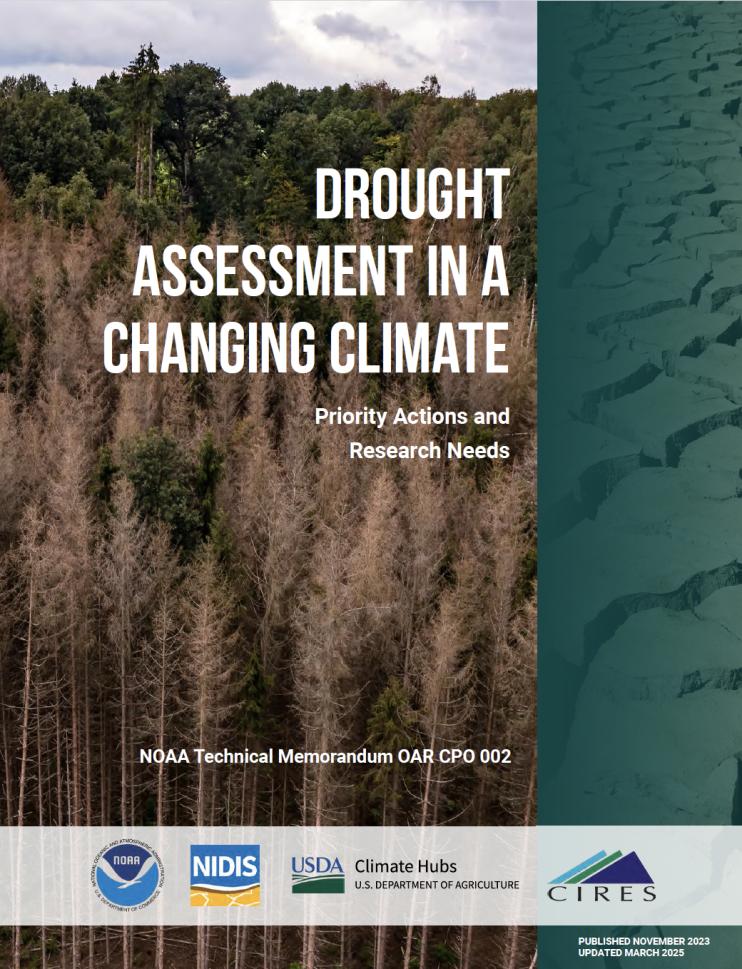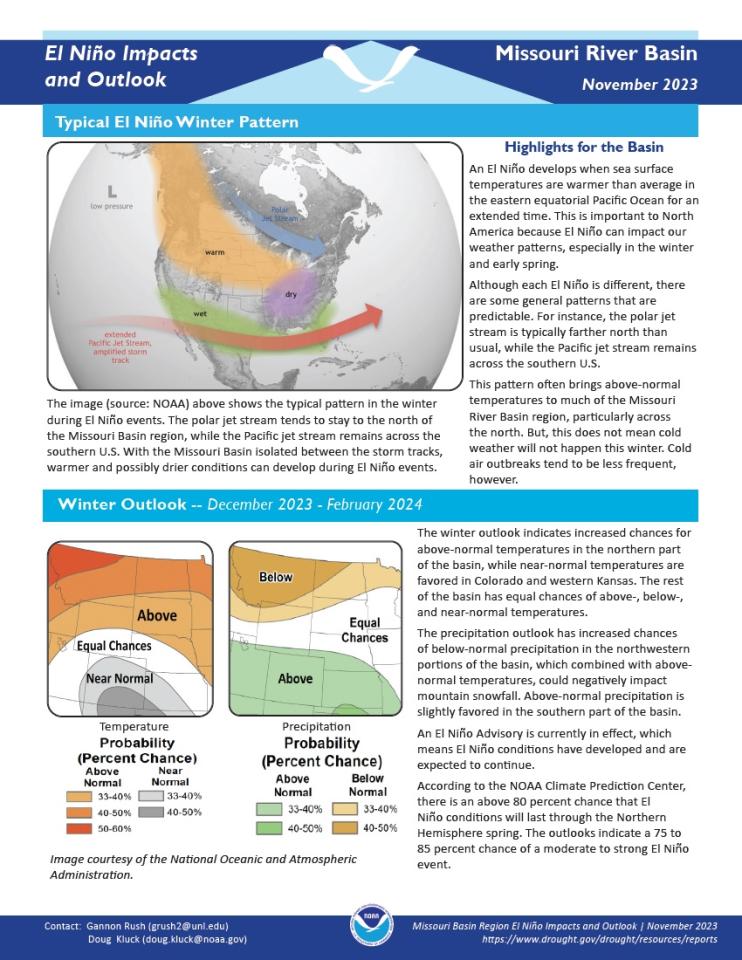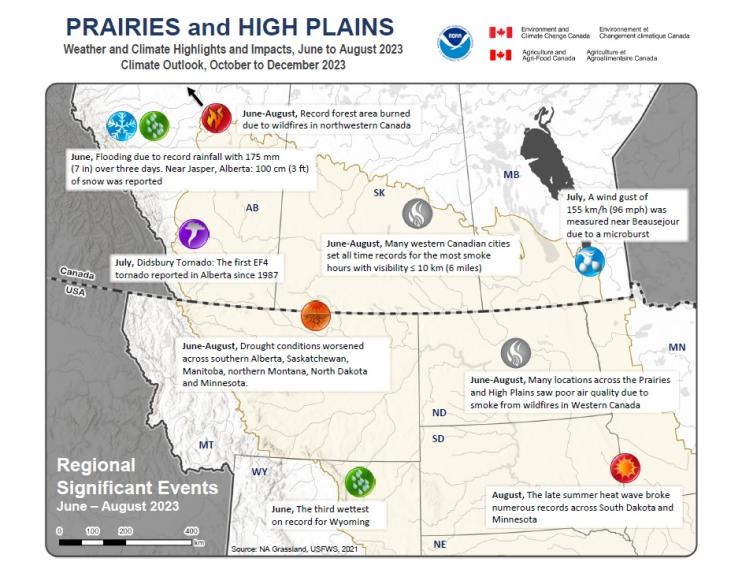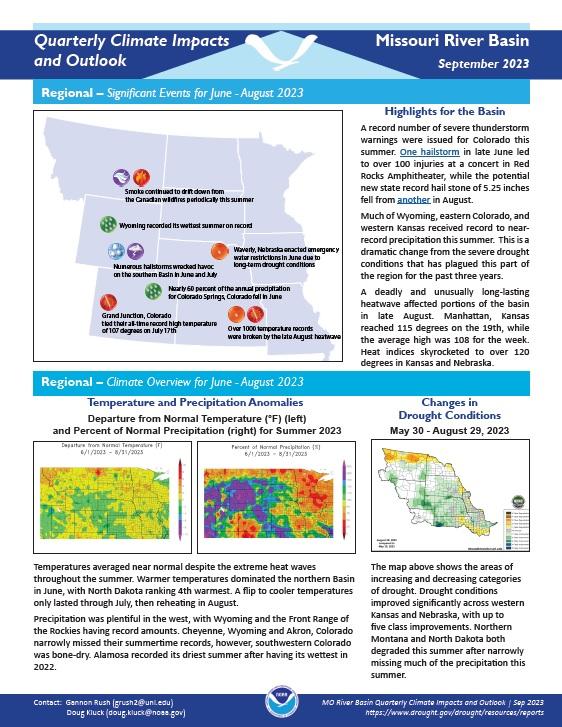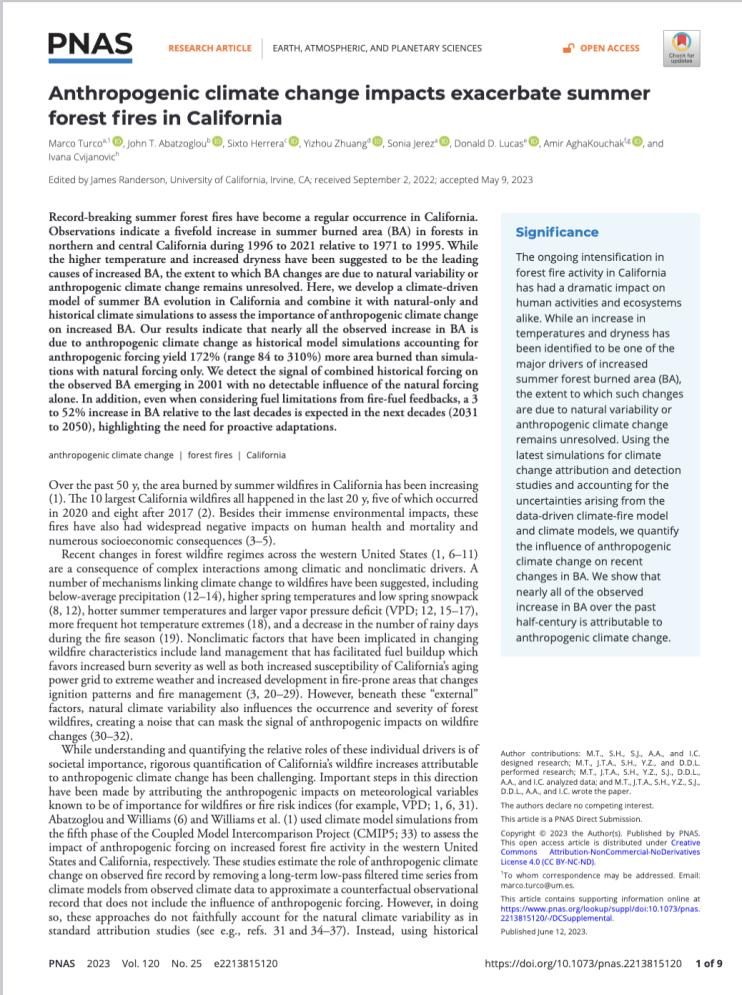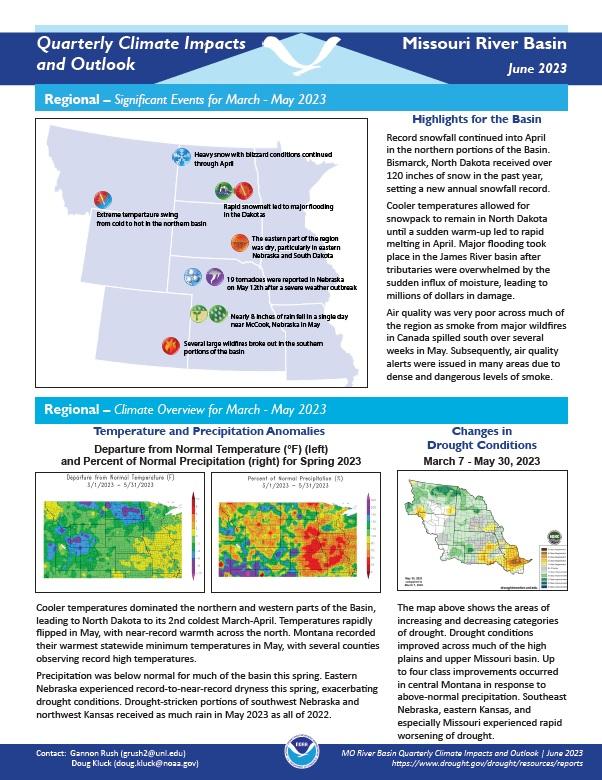For the latest forecasts and critical weather information, visit weather.gov.
In a changing climate, the intensity, duration, and frequency of droughts may change. This poses new challenges for drought assessment. Current methods for assessing drought conditions do not consistently and deliberately consider drought in the context of climate change, thereby unintentionally promoting drought response strategies that are limited in building long-term resilience in a changing climate.
This handout provides information on the typical EL Niño winter pattern; the El Niño outlook; potential winter and spring impacts; and comparisons of conditions during previous El Niño years for the Missouri River Basin region. Updated November 2023.
NOAA’s Regional Climate Services Program created these outlooks to inform the public about climate impacts within their respective regions. Each regional report contains easy-to-understand language, and anyone can access them through the U.S. Drought Portal.
Quarterly Climate Impacts and Outlook for the Canadian and U.S. Prairies and High Plains for June–August 2023, with an outlook for October–December 2023. Dated September 2023.
While much of the Prairies and High Plains saw warmer-than-normal conditions, the southwestern region remained cooler than normal. Much drier-than-normal conditions were observed across regions along the international border, with the dry spell extending further inland which impacted regions within Saskatchewan, Manitoba, and Minnesota.
Quarterly Climate Impacts and Outlook for the Missouri River Basin for June–August 2023. Dated September 2023.
Temperatures averaged near normal despite the extreme heat waves throughout the summer. Precipitation was plentiful in the west, with Wyoming and the Front Range of the Rockies receiving record amounts. Cheyenne, Wyoming and Akron, Colorado narrowly missed their summertime records; however, southwestern Colorado was bone-dry.
This article in Earth, Atmospheric, and Planetary Sciences was the result of NIDIS-supported research. Learn more about this research.
Quarterly Climate Impacts and Outlook for the Missouri River Basin for March–May 2023. Dated June 2023.
Cooler temperatures dominated the northern and western parts of the Basin, leading North Dakota to its 2nd coldest March–April. Temperatures rapidly flipped in May, with near-record warmth across the north. Precipitation was below normal for much of the basin this spring. Eastern Nebraska experienced record to near-record dryness this spring, exacerbating drought conditions.



